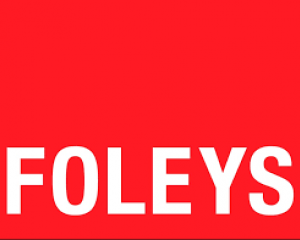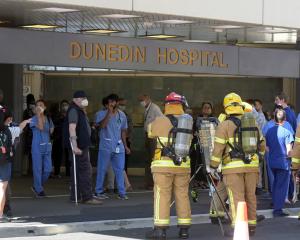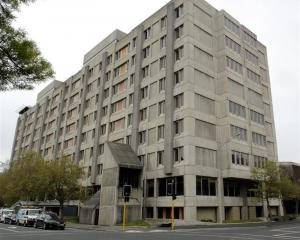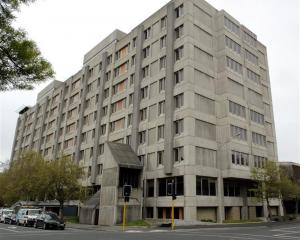Shortly after George Clarke learned to hypnotise chickens, he fell off the back of a truck and hit the top of his head on a rock.
He can still tell you how to hypnotise a chicken but recalls little about the accident, which occurred when the truck he was on lurched backwards.
The driver had stopped to see if a following motorcyclist who had crashed into the truck was all right.
George does not remember what happened next. He lost consciousness, which frightened his then 15-year-old sister Jackie, who thought he was dead.
When he was taken back to the farmhouse, he vomited.
Family friend Diana Pears recognised the urgency of the situation and realised that calling and waiting for an ambulance would take too long, so she bundled him into her car, along with other children and the motorcyclist, who sustained minor injuries, and set off on the 45-minute journey to Southland Hospital, Invercargill.
"She just had a sense that it was really serious," Pam said.
It is a decision Pam credits with saving George's life. With any trauma injury, the sooner medical treatment is received the better.
George stayed in a semi-conscious state on the trip, talking but repeating himself.
Once they arrived at Southland Hospital's emergency department (ED), he was seen immediately, given medication to reduce the acute swelling inside his skull and given a CT scan which showed the extent of the bleeding in his brain.
George's only recollection of his time in the ED is a vague memory of hearing an "English lady's voice".
The Otago Regional Rescue Helicopter team in Dunedin was alerted, and picked up the Dunedin intensive-care unit team of a nurse and an experienced registrar, who travelled to Invercargill to intubate George and put him on a ventilator.
Their work took about 30 minutes.
Back in Dunedin, neurosurgeon Prof Grant Gillett was on the case, scrubbed and ready to operate when the helicopter arrived, after a flight which normally takes 50 to 60 minutes depending on the wind.
It was only later the family learned that low cloud meant the helicopter only just got through.
In Dunedin, Pam was oblivious to the unfolding events. She had been on nightshift at the ICU and had her answerphone on silent so she could sleep during the day.
The first she knew about it was when a policeman knocked at her door about 5.45pm while she was cooking her evening meal.
When he told her George had been injured and that he was being brought to the intensive-care unit, she remembers "planting my feet and putting my back against the wall and saying `Big breath'."
She remembers the policeman turning off her cooking while she phoned the ICU to tell them she would not be at work that night.
They told her they knew George was on his way.
She headed to the hospital and waited for the helicopter to touch down on the helipad, from where he was taken to the main operating theatre.
She was able to see him briefly and remove his watch before he went to theatre.
Because of the extent of the haemorrhage, a flap of George's skull had to be removed to alleviate the pressure.
The blood from the haemorrhage was sucked out, the area filled with saline solution and the flap plated back into place.
Then it was a matter of sedating George overnight.
In the hours sitting at the bedside, not knowing how George might be when he came around, Pam worked out how she might structure her life to cope with a brain-damaged son.
It was a scene she had witnessed many times before in her work: "You get to know families a lot earlier than the patients".
She knew it was a "really good sign" when, emerging from his drugged state, George moved both arms purposefully to try to remove the irritating breathing tube.
While that reassured her about his physical state, she still did not know if he would suffer any other long-term effects.
"Most patients who have sustained serious head injuries suffer life-changing personality changes."
George was lucky he had no lasting effects from the incident.
For months, he was extremely tired and found it difficult to concentrate, but eventually returned to playing hockey and other physical activities. These include snowboarding, although Pam insisted he wear a helmet for this.
He is now a third-year University of Otago student, studying accounting and management, hoping to become a chartered accountant.
He and his mother agree the story could have been very different.
"Even getting through to Dunedin was a bit of a risk. If I had to go to Christchurch it could have been fatal," George said this week.
"I am definitely aware how lucky I am to get back to 100% without any physical disability."
Pam is also convinced the outcome for the youngest of her three children was likely to have been death if he had been forced to travel to Dunedin by road.
The extra time and the additional movement and stimulation would probably have resulted in further bleeding. Even with the excellent care he received while flying in a helicopter to Dunedin, George's bleeding increased.
He would also have been put at increased risk by travelling the extra one and a-quarter hours by helicopter to Christchurch.
Pam points out there is no helicopter pad at Christchurch Hospital, which means patients have to land at Hagley Park and travel by ambulance from there. It all involves extra time and movement, which could result in worsening trauma.
While George said it was strange talking about the accident after seven years, it made him realise the seriousness of it and he hoped telling his story would help convince others the Dunedin service needed to be kept to stop others in his position dying or becoming disabled.
Pam said one of the things she wanted people to realise was that it could happen to anyone.
"You don't know how many people say to me, 'I never thought it would happen to me or us'. But it does. There is nothing to stop it happening to George again."
Pam Adams' concerns
• Essential time will be lost for head-injury patients who have to travel to Christchurch for acute treatment.
• Flying patients is not always possible. Weather conditions often prevent patients from being flown to hospital, and longer ambulance journeys by road will increase their risk of death or disability.
• The extra movement and travel required to get patients to Christchurch could worsen injuries.
• Christchurch Hospital's ICU may be full when Southern patients need treatment. She says it is common for Christchurch to decline or delay the transfer of Dunedin ICU patients because of this.
• People need to be aware it is not only accidents which cause acute brain injury and a significant number of "youngish" patients have sudden brain haemorrhages.








